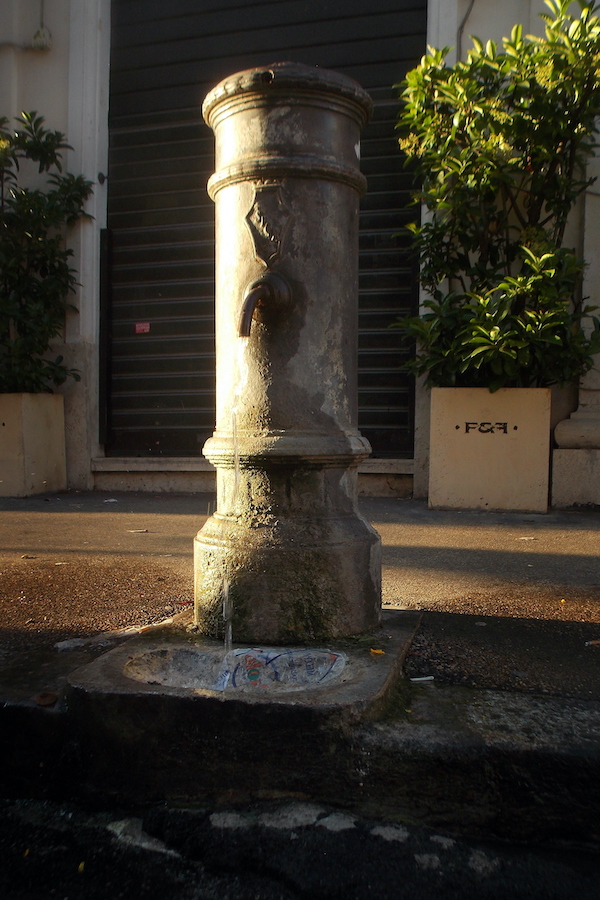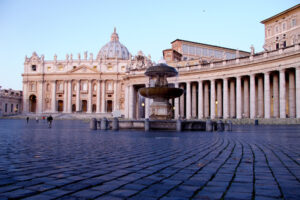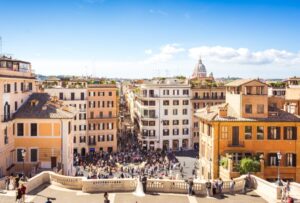Last Updated on February 25, 2025 by Lily Frank | Published: March 14, 2020
We’re not kidding—water is a cultural object in Rome, and there’s a whole etiquette on how to drink it.
When one drives into Rome from the surrounding countryside, one is greeted by a series of still-standing aqueducts. Their iconic shape—linked, multi-level arches—serves as a reminder of how important they were, and still are, to the city.
Without a consistent supply of fresh water, Rome could not have grown into a metropolis. Even today, the Acqua Vergine still delivers fresh water from the hills into Rome and fountains like the Trevi.
As you can see, Rome is a city with a particularly intimate relationship to water. But one can, incredibly, commit a water faux pas in Rome. Here’s a brief primer on tap water in Rome, and how to drink water like a Roman.
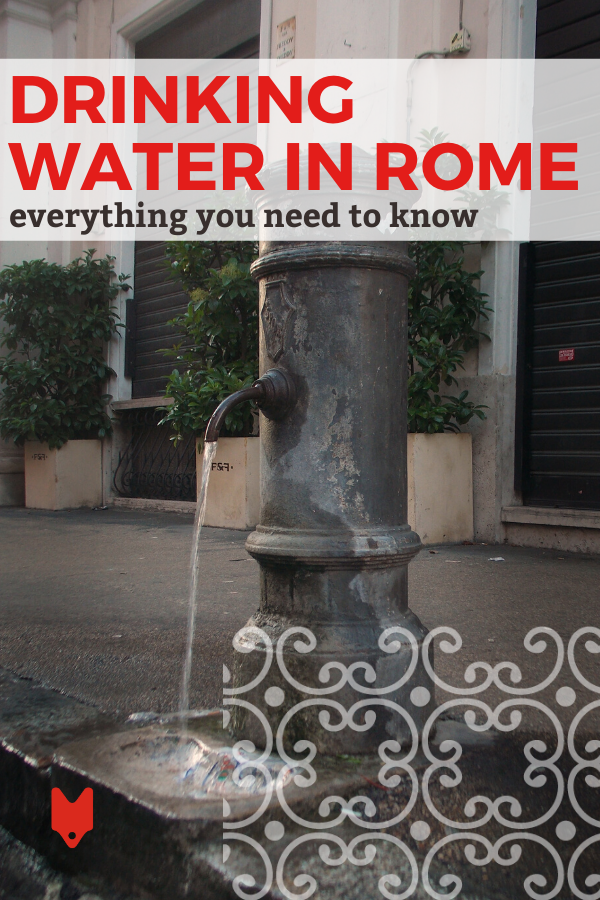
Photo credit: gérard, Text Overlay: Devour Rome Food Tours
1. Tap Water
Let’s get the easy one out of the way. Tap water in Rome is perfectly safe to drink. Punto e basta.
But does that mean you can always drink it? Not at all. I remember the day I first moved to Rome, and while I was settling in with new roommates, I grabbed a glass and went to the tap to fill it up. My roommates gave me a look as if I had just dipped my glass in the toilet. In Italian households, it’s considered uncouth to offer people water from the tap, even though it’s perfectly drinkable, and therefore everyone has a bottle or two in their fridge of still and/or sparkling water.
In restaurants, this is also true (more on that below). However, there’s an exception. At a bar, if you ask for a glass of water, you usually receive tap water. The glass is allowed to overflow for a second, apparently to clean the glass. Why tap water is virtually forbidden at restaurants but omnipresent at bars is one of those little mysteries of Italian life.
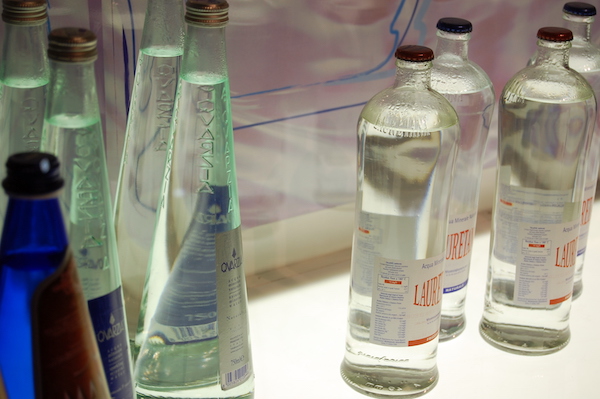
2. Bottled Water
Italians are famously particular about foods. A certain brand of coffee, a specific breed of tomato, the bread from that one bakery. This carries over to bottled water. Walk into any supermarket, and you’ll see a dozen varieties. Different brands, from different sources, and different levels of fizz. Everyone has their own favorite.
At restaurants, when you sit down, the waiter will ask what type of water you’d like. The choices are naturale (alternatively called liscia) and frizzante (also called gassata). The former is flat, the latter sparkling. Either way, a big, cold bottle will arrive at the table.
A few restaurants have their own filtration systems, with buttons to produce naturale and frizzante, but most places serve water in glass bottles. This is true everywhere, from a pizzeria to a Michelin-starred establishment. The only downside to this system is that you have to pay for each individual bottle (usually about €2), which can add up on a summer night with a big group that’ll guzzle down a bottle per person.
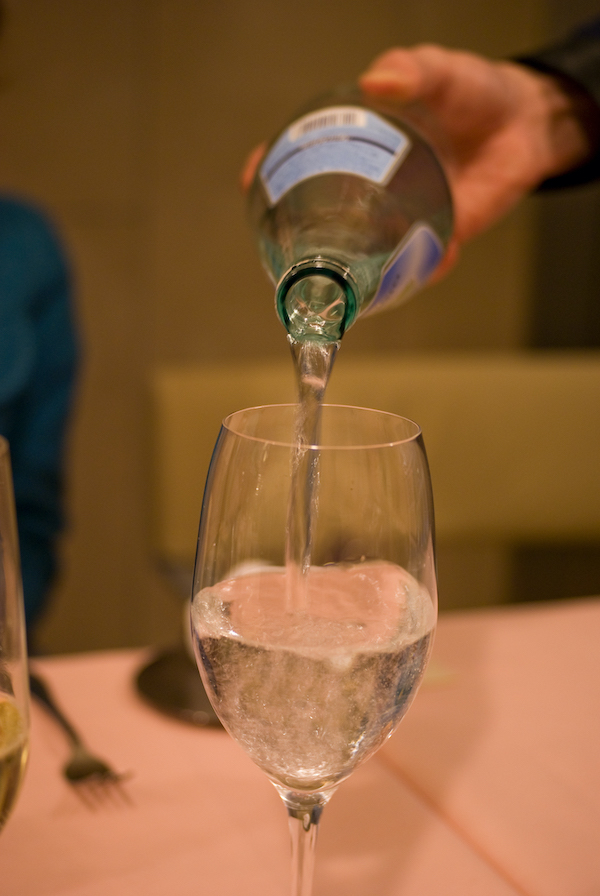
3. Fountains and Nasoni
If you walk into a bar, tobacconist or mini-market, you can usually find a fridge full of plastic bottles of water. But fortunately, Rome is full of absolutely free, drinkable, clean water from fountains. There are two types.
In Ancient Rome, most people got their water directly from fountains fed by those aqueducts I mentioned before. Rome is still full of such fountains. On many streets, especially in the center of town, there will be a sink-like fountain attached to the wall, which still spouts water. You can use them to fill up a water bottle, no problem. And you don’t need to know which ones have drinkable water—it’s the opposite. Fountain water in Rome is assumed to be drinkable, unless the fountain has a sign saying acqua non potabile.
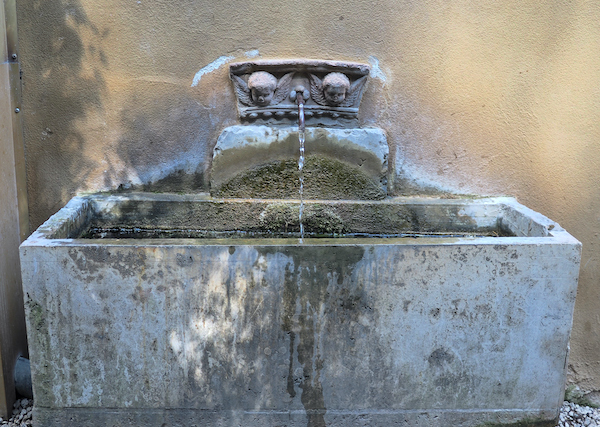
The most iconic drinking fountain of Rome, though, is the nasone. Meaning “big nose,” these are hydrant-shaped metal tubes which are connected to a pipe beneath the street, and continuously spout water from a slender faucet. In the older parts of the city, they’re omnipresent. Romans use them for everything—filling up a bottle, washing hands, or placing a dog bowl beneath the stream of water so that the cane can have a drink.
Watch the video to learn how to find and drink tap water from the Devour tour guides.
But there’s a trick to drinking from a nasone if you don’t have a bottle. The metal tap has a tiny hole drilled on the top, horizontal part, before the tube curves downwards and the water splashes onto the ground. Plug up the main hole of the tap with your finger, and the water will squirt vertically through the small hole, creating a little water fountain for you. It might seem strange at first, but drinking from a nasone is one of those experiences that makes you truly feel like you’re connected to the city. With the water splattering on your shoes and running down your chin, you couldn’t be anywhere else in the world.
